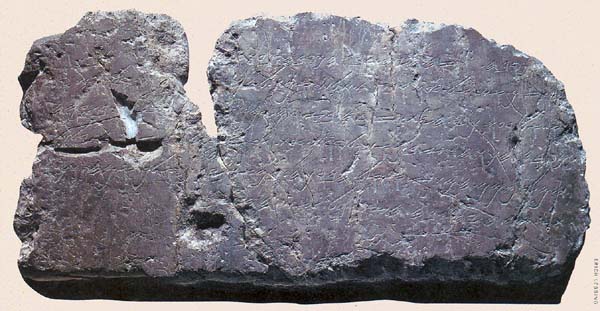Image Details

Erich Lessing
The Siloam inscription describes how workmen tunneled toward each other to build a channel that carried water from the Gihon Spring to within Jerusalem’s walls. Most scholars date the inscription to the reign of Hezekiah (727–698 B.C.E.), who was able to withstand a siege by the Assyrians in 701 B.C.E. because Jerusalem had access to fresh water. See drawing of inscription and transcription in modern Hebrew. An English translation of the text reads: “ … breakthrough. And this was the account of the breakthrough. While the laborers were still working with their picks, each toward the other, and while there were still three cubits to be broken through, the voice of each was heard calling to the other, because there was a zdh (perhaps “split,” “crack” or “overlap”) in the rock to the south and to the north. And at the moment of the breakthrough, the laborers struck each toward the other, pick against pick. Then the water flowed from the spring to the pool for 1,200 cubits. And the height of the rock above the heads of the laborers was 100 cubits.”
